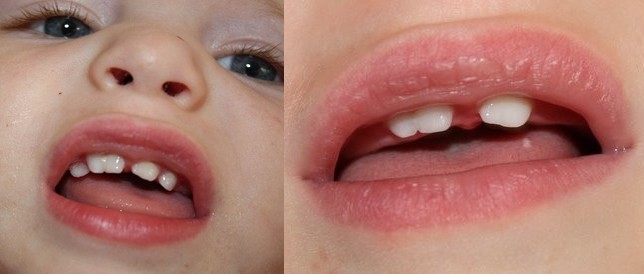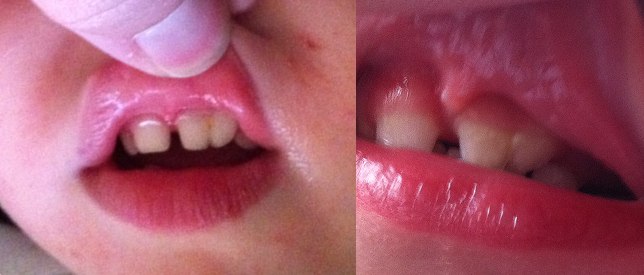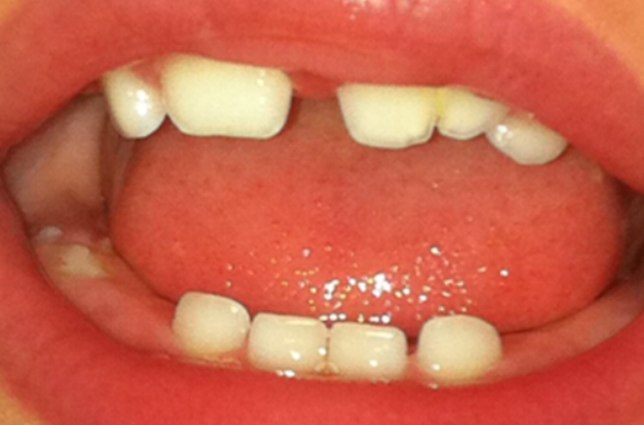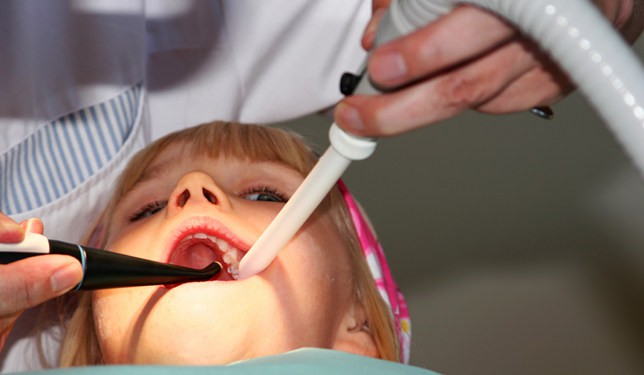Source: http://feedproxy.google.com/~r/BeautyFromAfar/~3/0GaNIJe9ZWw/
teeth surgery tooth implant cost tooth implants cost dental extraction dentist implants
Source: http://feedproxy.google.com/~r/BeautyFromAfar/~3/0GaNIJe9ZWw/
teeth surgery tooth implant cost tooth implants cost dental extraction dentist implants
facial surgery dental oral surgeons maxillofacial surgeon oral maxillofacial surgeon oral and maxillofacial surgeon
Source: http://www.omfdental.com/blog/2012/thankful/?utm_source=rss&utm_medium=rss&utm_campaign=thankful
oral tooth surgery sedation dentistry crown tooth dental bridge jaw surgery
implant teeth teeth implant cosmetic dental surgery maxillofacial surgeons dental surgeon
oral surgery dentistry periodontics oral implants dental crown oral tooth surgery
Source: http://blogohj.oralhealthjournal.com/clinical/dental-industry-2/new-rules-of-marketing-part-2
jaw surgery implant dentist dentist implant teeth surgery tooth implant cost
dental surgeons oral dental surgeon dental oral surgeon facial surgery dental oral surgeons
tooth implant cost tooth implants cost dental extraction dentist implants implants dentist
dental surgeon dental surgeons oral dental surgeon dental oral surgeon facial surgery
maxillofacial oral surgery dental oral dental surgery dental oral surgery dentalimplants
maxillofacial oral surgery dental oral dental surgery dental oral surgery dentalimplants
Source: http://www.richmondsmilecenter.com/blog/2012/12/07/sleep-better-richmond-dentist/
dental surgery dental clinic dentures dental implants what are dental implants
teeth implants cost dental works denture implants dental bridges implant dentists
 What is natural search engine optimization? In the biz, we segment SEO into two categories, organic (or natural seo) and paid (or PPC). The best metaphor for this is, natural SEO is like buying a home. Pay per click SEO is like renting a home.
What is natural search engine optimization? In the biz, we segment SEO into two categories, organic (or natural seo) and paid (or PPC). The best metaphor for this is, natural SEO is like buying a home. Pay per click SEO is like renting a home.
Natural SEO: Investing in Your Future
The core of organic SEO lies in how a site is built and the content placed on it. Ideally, your web company will design a custom dental website that appeals to search engine spiders, such as those belonging to Google. Factors like clean code, original text, internal links on keyword phrases, use of jQuery or HTML5 instead of Flash, metadata, and alternate image text contribute to an SEO-friendly website. Built with these elements, when a site map is submitted to Google, the website should do well on search. Of course, website upgrades, like home upgrades, increase value. As you add pages of original text, your website will become more and more valuable, meaning it will rank higher and for more keyword phrases on Google.
How does organic SEO work? When you submit a sitemap to Google, or when Google’s spiders happen upon your website, the spiders inject your code into Google’s algorithm. This long and secret algorithm tells Google how your website should come up in search engine results pages (SERPs). The factors mentioned above, from clean code to original content, appeal to search engine spiders and will influence higher Google SERPs rankings. When your site’s pages come up in Google SERPs, a user simply clicks your site’s URL and description, and he is redirected to your webpage. With a natural SEO strategy, you do not pay Google every time your indexed pages are clicked on by end users. On the contrary, your investment is in the building of your website. Use bricks and mortar instead of sand and twigs, and your site will thrive on Google SERPs long term.
PPC SEO: Investing in the Moment
PPC, or pay per click, describes an advertising opportunity. The most popular PPC is owned by Google and is called Google Adwords. You should know that you do not have to pay for Google Adwords to show up on page one of Google; you simply need a strategically, organically optimized website. However, if you want to pay to be on page one of Google because your website does not rank well, you can sign up for an Adwords campaign. You’ll select keyword phrases that you think potential dental patients might search for, and each of those phrases will be associated with a monetary figure. Then, you’ll pre-fund an account with Google Adwords. Every time your advertisement comes up on Google and someone clicks on it, your account will be debited the agreed upon monetary amount. When you run out of funds, Google will let you know.
What happens when you stop paying rent on a rental property? You are kicked out. The same is true of PPC with Google Adwords. When you stop funding your account, your ads no longer show up on SERPs. While this is a fair and reasonable arrangement, you will be left with nothing. If you had invested in natural SEO, your site may still be ranking high on Google SERPs, even during times when you don’t invest in additional content.
So, the short story is: natural SEO holds more long-term value than PPC SEO.
Help with Dental Website SEO
If you’d like to talk with us about your dental practice’s internet marketing strategy for 2013, or you have questions about natural search engine optimization, give us a call today at 972-781-8861.
Related posts:
Source: http://moderndentalmarketing.com/2012/12/natural-search-engine-optimization-costs-less-for-dentists/
oral surgery dentist dentist oral surgery dental implant surgery mouth surgery tooth implant procedure
Source: http://feedproxy.google.com/~r/TheDentalImplantBlog/~3/0zYjMLdCEho/
dental surgery dental clinic dentures dental implants what are dental implants
Source: http://www.richmondsmilecenter.com/blog/2012/12/07/sleep-better-richmond-dentist/
dental oral surgeons maxillofacial surgeon oral maxillofacial surgeon oral and maxillofacial surgeon dentistry oral surgery
dental implant procedure dental implants surgery dental implants procedure tooth implant surgery oral surgery teeth
oral and maxillofacial surgeon dentistry oral surgery oral surgery dentistry periodontics oral implants
Source: http://www.omfdental.com/blog/2012/spaghetti/?utm_source=rss&utm_medium=rss&utm_campaign=spaghetti
orthognathic surgery mini implants tooth replacement dentures implants dental extractions
Six Beagles dogs were used in this study. Five implants with two different surfaces, three with a ZirTi® surface (zirconia sand blasted, acid etched), and two with a ZirTi®-modified surface with dendrimers of phosphoserine and polylysine were installed in the right side of the mandible. In the most anterior region (P2, P3), two recipient sites were prepared with drills, and one implant ZirTi® surface and one coated with dendrimers implants were installed at random. In the posterior region (P4 and M1), three recipient sites were randomly prepared: two sites with a Piezosurgery® instrument and one site with drill and two ZirTi® surface and one coated with dendrimers implants installed. Three months after the surgery, the animals were sacrificed for histological analysis.
implants dental dental services implant dental dental implant oral surgeon
cosmetic surgery implants implant dental surgery dental clinic
Source: http://blogohj.oralhealthjournal.com/uncategorized/total-recalls
gum surgery maxillofacial jaw surgery wisdom tooth removal cost dentist dental implants dental solutions
dentures dental implants what are dental implants implants dental dental services
Source: http://feedproxy.google.com/~r/TheDentalImplantBlog/~3/epIvPgTR6sk/
oral surgery teeth dental surgery cost dental dentistry dentist
Since starting Oral Answers, many people frequently email me photos that would be useful to share with everyone here on Oral Answers to illustrate a particular dental condition. Since many parents end up coming to Oral Answers via the page on double teeth, I thought it would be appropriate to start a collection of double tooth photos.
This double tooth photo collection will start out with the three photos below. If your child has a double tooth (either gemination or fusion), a photo of your child would benefit other parents who come to this site searching for photos and information.
To get your photo below, simply use this contact form or simply send them to OralAnswers [at] gmail [dot] com, replacing the bracketed words with the normal email symbols.
This first photo is the one I featured on the original post that discusses double teeth. It is Rachel's son, who has gemination:

The following two photos are from Tiffany. At first glance, her son appears to have a gemination tooth on the opposite side as Rachel's son in the photo above:

Here's a close-up of the tooth pictured above:

Here's an updated photo of Tiffany's son now that he's two years old:
I would love it if you would submit your photos of a double tooth to help parents gain a better knowledge of what double teeth can look like. Please use this contact form or simply send them to OralAnswers [at] gmail [dot] com, replacing the bracketed words with the normal email symbols.
If you have any questions or comments, feel free to leave a comment in the comments section below. Thanks for reading!
Related posts:
Source: http://feedproxy.google.com/~r/OralAnswers/~3/8LJ_0g0DIrM/
periodontics oral implants dental crown oral tooth surgery sedation dentistry
oral and maxillofacial surgeon dentistry oral surgery oral surgery dentistry periodontics oral implants
Source: http://worldental.org/gums/special-care-tips-dental-implants/9317/
teeth implants implant teeth teeth implant cosmetic dental surgery maxillofacial surgeons
dentures implants dental extractions implant dentures gum surgery maxillofacial jaw surgery

With hurricane season among us, it is a good time to review some “need to knows” about brushing with compromised resources. Here are suggestions for keeping your mouth healthy when in an emergency situation.
If you have access to a toothbrush and are without water, you can still use it to brush the particles off the teeth. Dry brushing stimulates the salivary glands and will provide some natural digestion for the particles as well.
If you have no toothbrush handy, you can use your clean finger with some toothpaste. Remember to spit it out!
Even in a worse-case-scenario, if all you have is a fluoride mouthwash, use it. It may not remove plaque like brushing does, but it will help kill germs and prevent new plaque from forming.
In an emergency situation, it’s easy to grab sugary comfort foods. Instead of empty calorie candy bars that might contribute to tooth decay, try a granola bar instead. The crunchy granola will provide some friction for plaque removal, and some even have good nutritional value!
Shelters and hotels usually provide dental care items for free. Don’t be afraid to ask for them.
Have a safe and healthy hurricane season
dentures dental implants what are dental implants implants dental dental services
Six Beagles dogs were used in this study. Five implants with two different surfaces, three with a ZirTi® surface (zirconia sand blasted, acid etched), and two with a ZirTi®-modified surface with dendrimers of phosphoserine and polylysine were installed in the right side of the mandible. In the most anterior region (P2, P3), two recipient sites were prepared with drills, and one implant ZirTi® surface and one coated with dendrimers implants were installed at random. In the posterior region (P4 and M1), three recipient sites were randomly prepared: two sites with a Piezosurgery® instrument and one site with drill and two ZirTi® surface and one coated with dendrimers implants installed. Three months after the surgery, the animals were sacrificed for histological analysis.
dental extractions implant dentures gum surgery maxillofacial jaw surgery wisdom tooth removal cost
Source: http://worldental.org/teeth/dental-insurance-easier-smartphones/9311/
dental implant procedure dental implants surgery dental implants procedure tooth implant surgery oral surgery teeth
 A reader named Jeanny recently emailed me the following questions:
A reader named Jeanny recently emailed me the following questions:
Why is it necessary to suction after local anesthetic?
Why is it necessary to suction when doing a filling?
Can blood be involved in both of the above procedures?
I'll answer the first two questions later on in this article. In response to the last question, blood can be involved when giving anesthetic and doing fillings, but many times it is not.
First, let's talk about the two main types of suctions that dentists routinely use.
There are two main types of dental suctions that dentists use: the saliva ejector and the high volume suction.
The saliva ejector does exactly what its name implies; it sucks saliva out of the mouth. This is the suction pictured at the upper right of this article. Many times dentists will have the patient close down on this suction so that it can suction away any remaining saliva in the patient's mouth.
The other main type of dental suction that we use is the high volume suction. This suction is so strong that the dental assistant simply holds it close to where the dentist is working and it will suck away any nearby debris, much like a strong vacuum cleaner can suck away crumbs without actually touching them.
You can see the high volume dental suction pictured below - try to pardon the lack of glove use by that dentist!

Now that the introductions are over, let's talk about some of the different reasons why dentists will use a suction.
Keeping the patient comfortable is a high priority. In response to Jeanny's question, we suction after giving anesthetic because the anesthetic has a bitter taste, and most patients prefer to rinse out with water and use the saliva ejector. Also, if the anesthetic sits in the back of your mouth for too long, it may start to slightly numb the back of your mouth and could give the patient a gagging sensation.
We will also use the suction to make sure that you don't get too much water in your mouth while we are working.
When a dental hygienist cleans and polishes your teeth, you can get a lot of cleaning paste in your mouth. We use the suction to help clean all of that away. Also, when dentists are do amalgam fillings, pieces of the soft amalgam can sometimes fall away from the tooth surface. We use the suction to help whisk them away.
During some procedures, such as white fillings, it is important that the tooth stay clean and dry. The suction helps keep the tooth dry by sucking away any saliva, blood, and water that may have accumulated around the tooth. If the cavity went below the gum-line, then it's pretty likely that the gums will bleed during the filling.
As I mentioned in a previous article about the dental drill, the drill that dentists use to do fillings sprays out a lot of water to keep the tooth cool and clean. Unfortunately, that water can quickly build up in the mouth and get on the dental mirror. In order to ensure that the dentist can see the tooth while working on it, it's necessary to use the high volume suction to suck away all of that debris.
Those are the four main reasons that I came up with as to why dentists use the dental suction. In conclusion, let's take a look at a question that I asked my dental hygienist as a child.
I remember sitting in the dental chair in Dr. Arnold's office as a child wondering what happens to all of the stuff that gets sucked down the suction. Maybe I was hoping that the tooth fairy would somehow be able to save the bad part of my baby tooth that the dentist removed and put it back together once my tooth fell out. After gathering up the courage to ask, I think I was slightly disappointed by the answer.
After your saliva, tooth debris, etc. gets sucked away, it travels through the suction line to a vacuum separator that will separate out any solids. After that, your spit makes a journey down the pipes and into the sewer system.
It is now recommended that dentists install amalgam separators in their suction lines to separate out any dental amalgam and keep it from getting into the public sewer systems.
Do you have any questions about why dentists use suction? Leave a comment below and I'll try to get back to you. Thanks for reading!
Related posts:
Source: http://feedproxy.google.com/~r/OralAnswers/~3/mAT_akibDxY/
dentistry oral surgery oral surgery dentistry periodontics oral implants dental crown
Source: http://feedproxy.google.com/~r/TheDentalImplantBlog/~3/epIvPgTR6sk/
cosmetic dentistry tooth implant implant tooth cosmetic dentist tooth implants
 A reader named Jeanny recently emailed me the following questions:
A reader named Jeanny recently emailed me the following questions:
Why is it necessary to suction after local anesthetic?
Why is it necessary to suction when doing a filling?
Can blood be involved in both of the above procedures?
I'll answer the first two questions later on in this article. In response to the last question, blood can be involved when giving anesthetic and doing fillings, but many times it is not.
First, let's talk about the two main types of suctions that dentists routinely use.
There are two main types of dental suctions that dentists use: the saliva ejector and the high volume suction.
The saliva ejector does exactly what its name implies; it sucks saliva out of the mouth. This is the suction pictured at the upper right of this article. Many times dentists will have the patient close down on this suction so that it can suction away any remaining saliva in the patient's mouth.
The other main type of dental suction that we use is the high volume suction. This suction is so strong that the dental assistant simply holds it close to where the dentist is working and it will suck away any nearby debris, much like a strong vacuum cleaner can suck away crumbs without actually touching them.
You can see the high volume dental suction pictured below - try to pardon the lack of glove use by that dentist!

Now that the introductions are over, let's talk about some of the different reasons why dentists will use a suction.
Keeping the patient comfortable is a high priority. In response to Jeanny's question, we suction after giving anesthetic because the anesthetic has a bitter taste, and most patients prefer to rinse out with water and use the saliva ejector. Also, if the anesthetic sits in the back of your mouth for too long, it may start to slightly numb the back of your mouth and could give the patient a gagging sensation.
We will also use the suction to make sure that you don't get too much water in your mouth while we are working.
When a dental hygienist cleans and polishes your teeth, you can get a lot of cleaning paste in your mouth. We use the suction to help clean all of that away. Also, when dentists are do amalgam fillings, pieces of the soft amalgam can sometimes fall away from the tooth surface. We use the suction to help whisk them away.
During some procedures, such as white fillings, it is important that the tooth stay clean and dry. The suction helps keep the tooth dry by sucking away any saliva, blood, and water that may have accumulated around the tooth. If the cavity went below the gum-line, then it's pretty likely that the gums will bleed during the filling.
As I mentioned in a previous article about the dental drill, the drill that dentists use to do fillings sprays out a lot of water to keep the tooth cool and clean. Unfortunately, that water can quickly build up in the mouth and get on the dental mirror. In order to ensure that the dentist can see the tooth while working on it, it's necessary to use the high volume suction to suck away all of that debris.
Those are the four main reasons that I came up with as to why dentists use the dental suction. In conclusion, let's take a look at a question that I asked my dental hygienist as a child.
I remember sitting in the dental chair in Dr. Arnold's office as a child wondering what happens to all of the stuff that gets sucked down the suction. Maybe I was hoping that the tooth fairy would somehow be able to save the bad part of my baby tooth that the dentist removed and put it back together once my tooth fell out. After gathering up the courage to ask, I think I was slightly disappointed by the answer.
After your saliva, tooth debris, etc. gets sucked away, it travels through the suction line to a vacuum separator that will separate out any solids. After that, your spit makes a journey down the pipes and into the sewer system.
It is now recommended that dentists install amalgam separators in their suction lines to separate out any dental amalgam and keep it from getting into the public sewer systems.
Do you have any questions about why dentists use suction? Leave a comment below and I'll try to get back to you. Thanks for reading!
Related posts:
Source: http://feedproxy.google.com/~r/OralAnswers/~3/mAT_akibDxY/
oral dental surgeon dental oral surgeon facial surgery dental oral surgeons maxillofacial surgeon